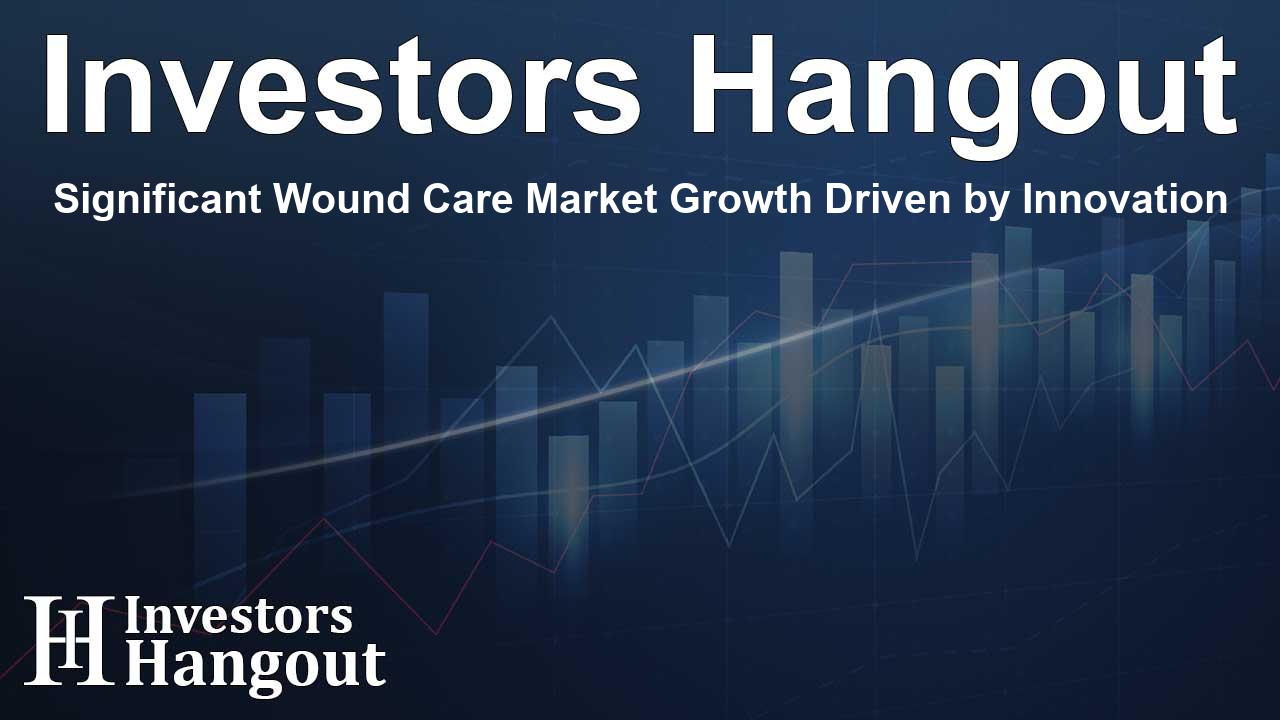Significant Wound Care Market Growth Driven by Innovation

Exploring the Wound Care Market's Growth Trajectory
The wound care market is set for impressive growth over the coming years, with a projected increase of USD 6.95 billion from 2024 to 2028. This surge can be attributed to the rising prevalence of wounds, both acute and chronic, coupled with innovative advancements in wound care products. Currently, the market is growing at a compound annual growth rate (CAGR) of 5.8%, highlighting its expanding importance in the healthcare sector.
Key Drivers Behind Market Expansion
Several factors are driving this growth, most notably the increasing incidence of conditions that necessitate advanced wound care. Chronic ailments, particularly diabetes and cardiovascular diseases, often lead to wounds requiring specialized treatment. Additionally, the demand for regenerative medicine products is fueling interest and investment in this area.
Advancements in Wound Care Technology
One of the most significant trends in the wound care market is the innovation brought about by advanced technologies. Companies are developing smart dressings that integrate digital monitoring capabilities, aiding in real-time tracking of wound healing processes. These technologies are proving essential for effective management, especially in cases of complex wounds.
Growing Demand for Combination Dressings
Another prominent trend is the increasing preference for combination wound dressings. These products amalgamate various functionalities into a single dressing, enhancing user convenience and improving overall healing outcomes. Healthcare providers are more inclined to opt for these advanced dressings due to their efficiency and effectiveness in promoting rapid wound recovery.
Challenges Facing the Market
Despite a promising growth outlook, the wound care market grapples with challenges that could hinder its expansion. High costs associated with advanced wound care products are a significant barrier to accessibility for some patients. Expenditures related to these products can escalate quickly, especially with the frequent dressing changes many patients require.
Financial Implications for Patients
In terms of financial implications, annual wound care spending in the United States alone ranges from USD 45 to 55 billion. Advanced dressings can be particularly costly, with prices for products like foam dressings reaching around USD 9.83 per application, requiring careful management and planning from both patients and healthcare providers.
The Importance of Education and Awareness
Awareness and education play crucial roles in the successful adoption of advanced wound care technologies. Healthcare professionals and patients alike need comprehensive training on how to utilize these products effectively. Enhanced education can reduce complications and elevate patient outcomes, making timely interventions paramount to effective wound management.
Market Segmentation Insights
The wound care market is diversified into various segments, including products, applications, and geography. In terms of product types, advanced wound dressings are quickly becoming the preferred choice among healthcare facilities. This preference is driven by their ability to promote faster healing and reduce infection risks.
Application Areas
The market is also divided based on applications into chronic and acute wounds, each requiring tailored approaches for effective management. Chronic wounds, in particular, are on the rise due to aging populations and the prevalence of chronic diseases, necessitating innovative solutions.
Regional Market Dynamics
Geographically, the wound care market shows strong performance in North America, Europe, and parts of Asia. North America, in particular, commands a substantial market share, driven by sophisticated healthcare systems and a higher expenditure on healthcare innovations.
The Future of Wound Care
Looking forward, continuous innovation will be vital to address the challenges faced by the wound care market. The integration of artificial intelligence in wound management forms a potential game-changer, enhancing patient care and operational efficiencies in healthcare facilities. Furthermore, the push towards sustainability with biodegradable materials is critical for the future direction of wound care products.
Frequently Asked Questions
What factors are driving the growth of the wound care market?
The growth is primarily driven by the rising prevalence of wounds, innovation in wound care products, and increasing demand for advanced treatment options.
How much is the wound care market projected to grow?
The market is estimated to grow by USD 6.95 billion from 2024 to 2028 at a CAGR of 5.8%.
What challenges does the wound care market face?
High costs of advanced treatments and limited accessibility for patients are significant challenges impacting market expansion.
What are smart dressings?
Smart dressings are advanced wound care products that integrate digital monitoring capabilities, allowing for real-time tracking of wound health.
Where are the major markets for wound care products located?
North America, Europe, and parts of Asia are the leading regions with significant market shares due to advanced healthcare infrastructure.
About The Author
Contact Riley Hayes privately here. Or send an email with ATTN: Riley Hayes as the subject to contact@investorshangout.com.
About Investors Hangout
Investors Hangout is a leading online stock forum for financial discussion and learning, offering a wide range of free tools and resources. It draws in traders of all levels, who exchange market knowledge, investigate trading tactics, and keep an eye on industry developments in real time. Featuring financial articles, stock message boards, quotes, charts, company profiles, and live news updates. Through cooperative learning and a wealth of informational resources, it helps users from novices creating their first portfolios to experts honing their techniques. Join Investors Hangout today: https://investorshangout.com/
The content of this article is based on factual, publicly available information and does not represent legal, financial, or investment advice. Investors Hangout does not offer financial advice, and the author is not a licensed financial advisor. Consult a qualified advisor before making any financial or investment decisions based on this article. This article should not be considered advice to purchase, sell, or hold any securities or other investments. If any of the material provided here is inaccurate, please contact us for corrections.
